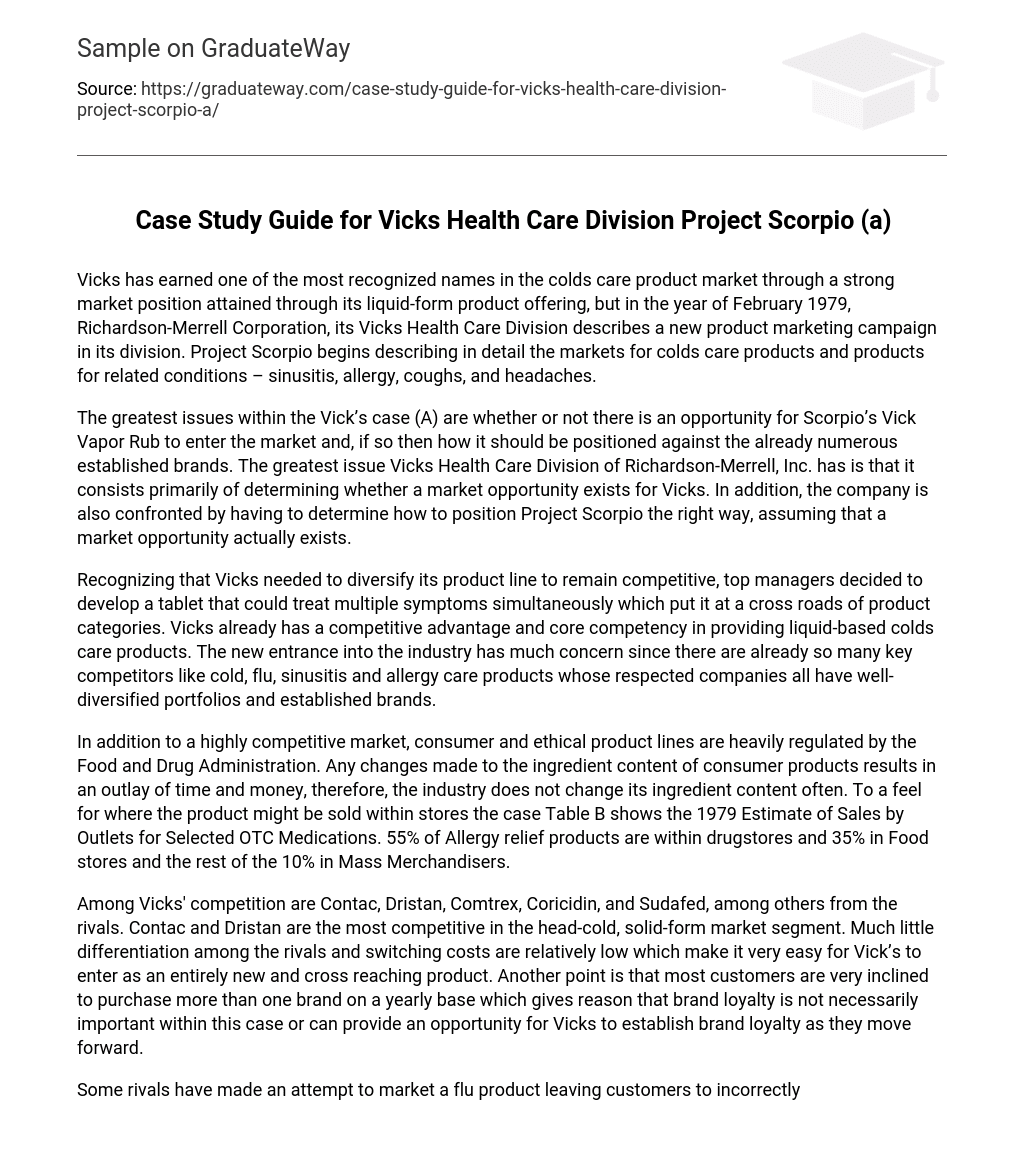Vicks, a well-known name in the market for colds care products, gained a strong position with its liquid-form offerings. However, in February 1979, Richardson-Merrell Corporation introduced a new marketing campaign for their Vicks Health Care Division. This campaign, called Project Scorpio, focused on the markets for colds care products as well as products for related conditions such as sinusitis, allergy, coughs, and headaches.
The main concerns in the Vick’s case (A) revolve around the possibility of Scorpio’s Vick Vapor Rub entering the market and how it should be positioned compared to established brands. The primary challenge for Vicks Health Care Division of Richardson-Merrell, Inc. is determining if there is a market opportunity for Vicks and deciding on the appropriate positioning for Project Scorpio, if a market opportunity does exist.
With the recognition that Vicks must expand its product line in order to stay competitive, senior executives made the decision to create a tablet capable of treating various symptoms at once, placing it in a unique position between different product categories. Vicks already possesses a competitive edge and expertise in offering liquid-based products for colds. However, entering into this new market raises concerns as there are already numerous strong competitors offering a wide range of cold, flu, sinusitis, and allergy care products, each with well-diversified portfolios and established brands.
Consumer and ethical product lines are heavily regulated by the Food and Drug Administration, which adds to the challenges of operating in a highly competitive market. Making changes to the ingredient content of consumer products is time-consuming and expensive, so the industry does not do it frequently. For insights on potential sales outlets, Table B provides the 1979 Estimate of Sales by Outlets for Selected OTC Medications. According to this data, 55% of Allergy relief products are sold in drugstores, 35% in food stores, and the remaining 10% in mass merchandisers.
Among Vicks’ competitors in the head-cold, solid-form market segment are Contac, Dristan, Comtrex, Coricidin, and Sudafed. Contac and Dristan are the most competitive rivals. There is little differentiation among the competitors and switching costs are relatively low, making it easy for Vicks to enter as a new product. Additionally, many customers purchase multiple brands each year, suggesting that brand loyalty is not crucial in this case. This presents an opportunity for Vicks to establish brand loyalty as they move forward.
There have been attempts by competitors to market a flu product, leading customers to mistakenly use cold and cough products or look for other, potentially harmful prescriptions from doctors. This is because the Food and Drug Administration sets a limit on over-the-counter products, causing consumers to turn to physicians for higher concentration medication. In summary, there are numerous quantitative and qualitative reasons that support the potential future market for this Vick’s Rub case.





